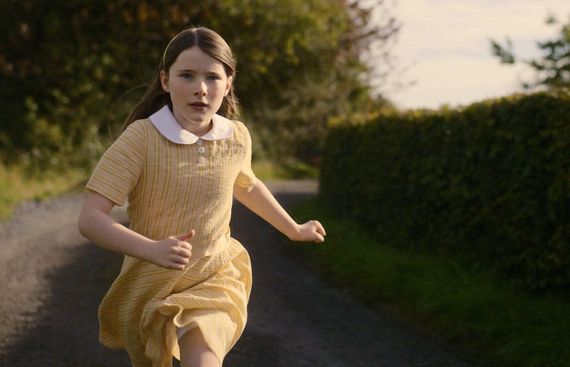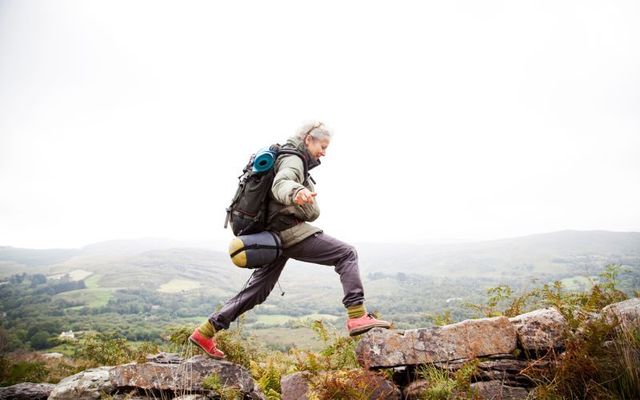Recent events seem to have moved the needle on what it means to be sovereign, Irish, and a global citizen in 2023, says Trailblazery founder and Scoil Scairte mentor Kathy Scott.
The passing of Elizabeth II in September 2022 signified the end of an era and the last gasps of the British Empire as we have known it. Six months later in an epic twist of fate Brigid, a triple Goddess in the Celtic Pantheon and revered matron Saint of Ireland is granted a national holiday while An Cailín Ciúin / The Quiet Girl becomes the first Irish-language feature film in history to be shortlisted for an Oscar.
Read more
We are left to wonder if these moments are simply markers in the passage of time or if is there a deeper significance at play?
An Ghaeilge is the ancestral language of the Irish people and one of the oldest living languages in the world. Our mother tongue was almost eradicated but is still alive today despite a turbulent history.
By the time of the Irish Penal Laws of 1695, communication in the Irish language was forbidden and labeled as rebellious against the powers of Britain. However Irish remained the majority language in Ireland, thanks in large part to the hedge school movement, until the Great Famine (1845-49). At this time the number of Irish speakers was at four million and may have been the highest in history. But after An Gorta Mór (Great Hunger) over two million people either died or fled the country leaving behind only a small minority of Irish speakers.
The language was now on the point of extinction. English was increasingly seen as the language of social and political advancement while Irish was considered the language of the past and of the poor. And while these devastating waves of trauma almost wiped out the language some small but significant waves of resistance kept it alive. We are learning that on the other side of trauma lies possibility and post-traumatic growth.
The tides began to turn for the Irish language as the waves of nationalism and modernism shaped cultural identity in the late nineteenth century. Ireland became steeped in a resurgence of interest in Irish language, literature, history, and folklore known as the Gaelic revival.
When the Free State was established in 1922, Irish was declared the national language and language revival was a primary objective of the government’s policy for years to come. Revolutionary leader Michael Collins claimed “The biggest task will be the restoration of the language… Irish will scarcely be our language in this generation, not even perhaps in the next. But until we have it again on our tongues and in our minds, we are not free.”
As a language, Irish is unique to Ireland and is of crucial importance to the identity of the Irish people, to Irish culture and to world heritage. Just as the body holds biological markers of trauma, our native language holds cultural markers that sweep through the currents of history leaving tidemarks behind that coordinate with the rise and fall of empires. The language levels are contrapuntal, ebbing at moments of famine and mass emigration and flowing at moments of cultural awakening.
Our mother tongue is more than a symbol of national identity; it shapes our worldview. Languages are a key element in our cultural expression, sovereignty and overall well-being.
One of my teachers, Dr. Gabor Maté, states that we are not our feelings. In order to heal trauma we need to recognize our feelings but we do not have to identify as them. We host and experience the feelings but they do not define us. This resonates beautifully with the expression of emotions (na mothúcháin) in the Irish language. ‘Tá áthas orm’ literally translates to ‘there is happiness on me ’ rather than plainly stating ‘I am happy’. ‘Tá brón orm’ means ‘there is sadness on me’ versus 'I am sad’ in the English language. The Irish speaker connects to a temporary emotional state and can embody a greater sense of impermanence around that state of happiness or sadness.
Is the passage of time orienting us back into the right relationship with our native language?

Credit: An Cailín Ciúin
The tides are slowly turning for our 'teanga dhúchais', our native tongue. This ancient language that has animated the Irish people and consciousness for as far as we can remember, continues to rise despite a tumultuous past. It has somehow defied the odds by surviving and thriving in the twenty-first century.
Some of the key moments that have contributed to the latest resurgence include Manchan Magan’s 2018 clarion call article “A magical vision is hidden in the Irish language – we need to rediscover it”. He went on to publish Thirty-Two Words for Field: Lost Words of the Irish Landscape during a global pandemic and inspired a passionate wave of renewed interest in our mother tongue. Other cultural contributors to the rise of the language include Belfast hip hop trio Kneecap, rapper Denise Chaila and the global rise of Irish Language cinema including Black 47, Arracht, Song of Granite, and now An Cailín Ciúin on the road to the Oscars.
Trauma is often thought of as a watershed moment. Our lives become defined by life pre and post the traumatic experience. It seems we are witnessing a cultural watershed moment right now as more and more people in Ireland and around the world are remembering and reconnecting to indigenous ways of being.
There are many routes to post-traumatic growth. We can find better ways to connect to ourselves, each other, and this place we call home. We can catch our breath and return to our senses. We can slow down and live in our bodies. We can practice wonder and awe. We can tell stories and sing songs. We can dance. We can laugh. We can build community. We can be better ancestors-in-training. We can unlearn and relearn. And we can speak our mother tongue.
Scoil Scairte is offering in collaboration with Manchán Magan a 9-week immersion in Irish cultural heritage that weaves language, place, identity, and wellbeing with community and kinship.
Scoil Scairte spring edition runs for 9 weeks from March 02 - April 27 and will spotlight the people, place, culture, and communities of the Galway region on the west coast of Ireland. Find out more here.




Comments